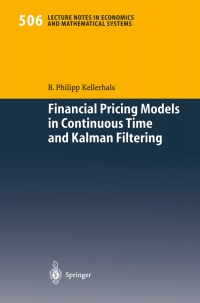Question
II. The single-index model for stock i is ri rf =i+ i(rMrf) + ei. The single-index model for stock j is rj rf = j+
II. The single-index model for stock i is ri rf =i+ i(rMrf) + ei. The single-index model for stock j is rj rf = j+ j (rM-rf) + ej. The standard deviation of the stock market return is M=0.12. The standard deviation of ei is ei=0.3. The standard deviation of ej is ej=0.15. The market beta equals 1.5 for stock i and 2 for stock j or i=1.5, j=2. The expected stock market return E(rM) is 12% and the risk-free rate rf is 5%. Suppose the simple CAPM is valid. (15 points) (a) Calculate the systematic risk, firm-specific risk, and total risk of both stocks i and j. (6 points) (b) Which stock has lower total risk and which stock has a lower expected return? (5 points) (c) Does the stock with the lower total risk have a lower expected return? Explain. (4 points)
Step by Step Solution
There are 3 Steps involved in it
Step: 1

Get Instant Access to Expert-Tailored Solutions
See step-by-step solutions with expert insights and AI powered tools for academic success
Step: 2

Step: 3

Ace Your Homework with AI
Get the answers you need in no time with our AI-driven, step-by-step assistance
Get Started


